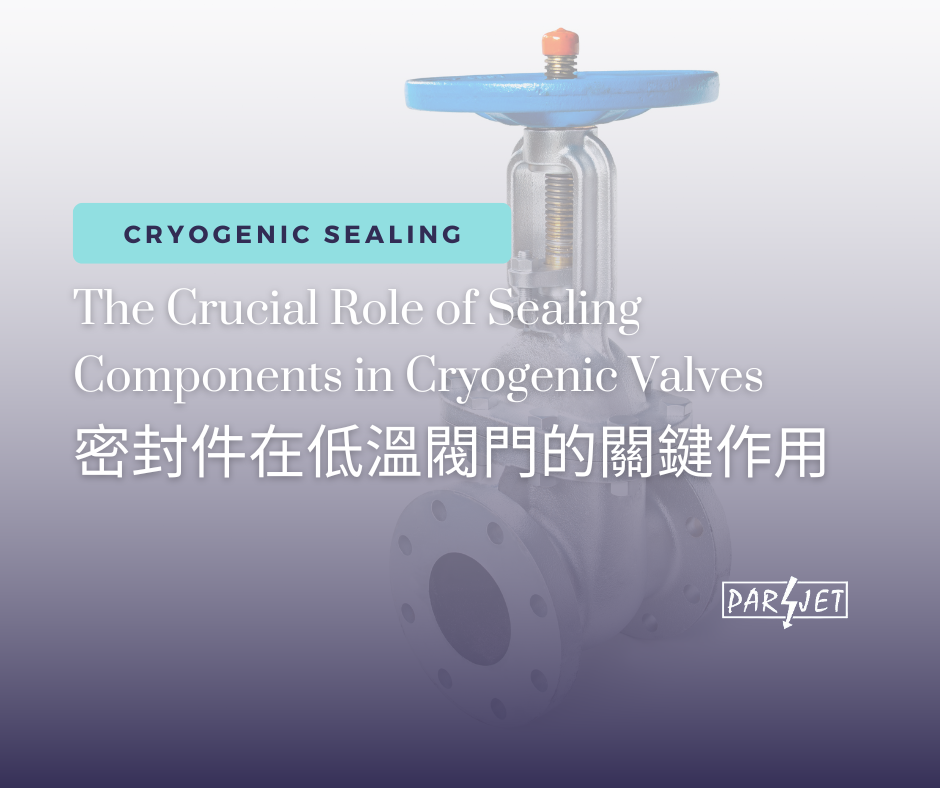The Crucial Role of Sealing Components in Cryogenic Valves
In industries dealing with extreme temperatures, the reliability and functionality of equipment are critical. Cryogenic valves are essential for managing the flow of ultra-cold liquids and gases; they rely heavily on their sealing components to function effectively. The seals ensure that there is no leakage, maintaining the safety and efficiency of the entire system to prevent serious consequences. This blog explores the importance, challenges, and advancements in sealing components for cryogenic valves.
Understanding Cryogenic Environments
Cryogenic applications involve temperatures below -150°C (-238°F), where materials can behave differently than in ambient conditions. Some industries involve with cryogenics temperature includes:
- • Aerospace: For rocket fuels and oxidizers.
- • Medical: For storing biological samples and gases like liquid nitrogen.
- • Energy: For the storage and transport of liquefied natural gas (LNG).
- • Research: For experiments requiring extremely low temperatures.
In these settings, sealing components must withstand extreme cold without compromising their integrity or performance.
Challenges of Cryogenic Valve Sealing
Cryogenic conditions present several unique challenges for sealing components:
- Material Contraction: At low temperatures, materials contract which can easily result in leakages if seals are unable to accommodate to these changes.
- Loss of Flexibility: Conventional sealing materials may become brittle and lose their elasticity in cryogenic environments.
- Chemical Compatibility: Seals must be able to resist abrasive chemical, which can be particularly aggressive at low temperatures.
- Pressure Fluctuations: Cryogenic systems often experience significant pressure changes, requiring seals that can adapt to these variations.
Types of Sealing Components in Cryogenic Valves
Several advanced sealing solutions have been developed to address these challenges:
- Spring Energized Seals: These seals incorporate a metallic spring within a polymer jacket. Common springs include canted coil spring, helical spring and cantilever spring. The spring maintains a constant force on the seal, ensuring it remains engaged despite temperature fluctuations. Materials like PTFE (Polytetrafluoroethylene) and PEEK (Polyether ether ketone) are commonly used for the jacket due to their low friction and chemical resistance.
- Elastomeric Seals: Special elastomers, such as fluorocarbon and silicone, can retain their flexibility and sealing properties at low temperatures. These seals are often used in conjunction with other technologies to enhance overall performance.
- Composite Seals: Combining different materials allows for a balance of properties, such as flexibility, chemical resistance, and durability. These seals are custom-designed for specific applications to ensure optimal performance.
Key Features of Effective Cryogenic Seals
To be effective in cryogenic environments, sealing components must have several key features:
- • Wide Temperature Range: Ability to function effectively from ambient temperatures down to cryogenic levels.
- • Chemical Resistance: Compatibility with a wide range of cryogenic fluids.
- • Low Permeability: Minimized risk of leaks to maintain system integrity.
- • Durability: Long-lasting performance even in harsh operating conditions.
Applications of Cryogenic Sealing Components
Cryogenic seals are vital in numerous applications across various industries:
- • LNG Transport and Storage: Ensuring safety and efficiency in the handling of liquefied natural gas.
- • Rocket Propulsion Systems: Providing reliable sealing for cryogenic fuels, essential for safe and successful space missions.
- • Cryogenic Storage Tanks: Preventing leaks in tanks used to store ultra-cold liquids, crucial for medical and research applications.
- • Industrial Gas Production: Maintaining the integrity of systems producing and storing gases like nitrogen and oxygen.
Innovations and Future Trends
The field of cryogenic sealing is continuously evolving, with ongoing research aimed at improving materials and designs. Innovations include:
- • Advanced Polymers: Development of new polymer materials that offer enhanced performance at low temperatures.
- • Nanotechnology: Utilizing nanomaterials to create seals with superior strength and flexibility.
- • FEA analysis: Using advanced technology, this model can simulate the outcome of different sealing designs and identify failure instead of going through long trial and testing processes.
- • 3D Printing: Customizing seals for specific applications using additive manufacturing techniques.
Conclusion
Sealing components are critical to the reliability and safety of cryogenic valves. Advanced sealing technologies, such as spring energized seals and specialized elastomers, address the unique challenges posed by cryogenic conditions. As industries continue to push the boundaries of cryogenics, the importance of high-quality sealing solutions will only grow, driving further innovation and improvements in this essential field.
Investing in robust cryogenic seals not only enhances the performance of cryogenic systems but also ensures the safety and efficiency of operations across various industries. The ongoing advancements in sealing technology promise even greater reliability and functionality in the future, making it an exciting area of development in modern engineering.
At Parjet, we offer a wide range of PTFE seals that is a great sealing solution for cryogenic valves. PTFE offers great chemical compatibility and temperature resistance which prolongs the life expectancy of the seals.
For more information on the products that we can offer, please visit here.






